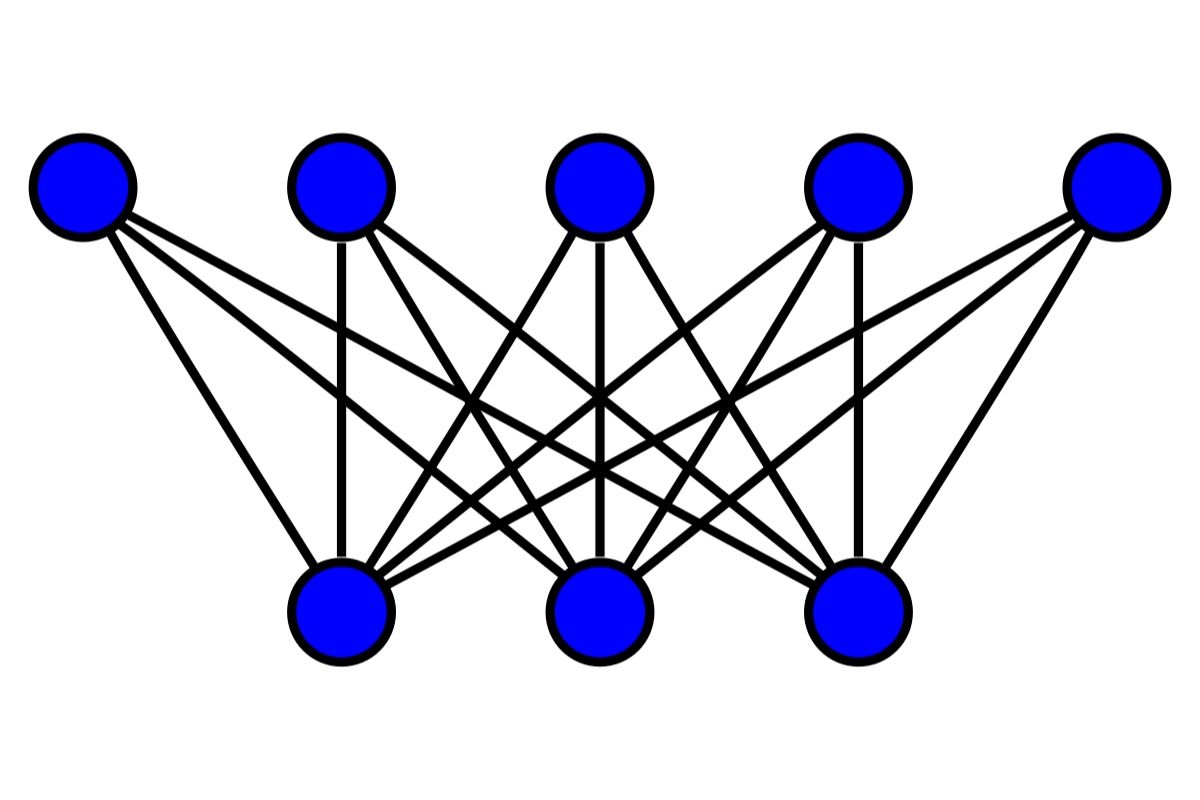
Bipartite graphs are a fascinating concept in mathematics and computer science. These graphs consist of two distinct sets of vertices, where each edge connects a vertex from one set to a vertex in the other set. But what makes bipartite graphs so special? They have unique properties that make them useful in various applications, from network design to matching problems. For instance, bipartite graphs can help solve problems like job assignments, where workers need to be matched to tasks efficiently. They also play a crucial role in algorithms for finding maximum matchings and minimum vertex covers. Dive into these 34 facts to uncover the intriguing world of bipartite graphs and their practical uses!
What is a Bipartite Graph?
A bipartite graph is a special type of graph in mathematics and computer science. It consists of two sets of vertices, with edges only running between vertices from different sets. This unique structure has many interesting properties and applications.
- Bipartite graphs can be divided into two disjoint sets of vertices.
- No two vertices within the same set are adjacent.
- They are also known as bigraphs.
- A common example is a two-colorable graph, where each set of vertices can be colored differently.
- Bipartite graphs are used in matching problems to pair elements from two sets.
Properties of Bipartite Graphs
Understanding the properties of bipartite graphs helps in recognizing their unique characteristics and applications.
- A graph is bipartite if and only if it contains no odd-length cycles.
- The degree of a vertex in a bipartite graph is the number of edges connected to it.
- The bipartite adjacency matrix is a block matrix with zero diagonal blocks.
- König's theorem states that in any bipartite graph, the size of the maximum matching equals the size of the minimum vertex cover.
- Hall's marriage theorem provides a condition for a perfect matching in bipartite graphs.
Applications of Bipartite Graphs
Bipartite graphs have practical applications in various fields, from computer science to biology.
- Used in network flow problems to model relationships.
- Employed in job assignment problems to match workers to tasks.
- Social networks use bipartite graphs to represent relationships between users and groups.
- In biology, they model interactions between species or genes.
- Recommendation systems use bipartite graphs to suggest products to users.
Algorithms Involving Bipartite Graphs
Several algorithms specifically deal with bipartite graphs, making them crucial in computational tasks.
- The Hopcroft-Karp algorithm finds maximum matchings in bipartite graphs.
- Breadth-First Search (BFS) can be used to check if a graph is bipartite.
- Depth-First Search (DFS) helps in finding connected components in bipartite graphs.
- The Hungarian algorithm solves assignment problems using bipartite graphs.
- Bipartite graph coloring algorithms assign colors to vertices to ensure no two adjacent vertices share the same color.
Real-World Examples of Bipartite Graphs
Bipartite graphs appear in many real-world scenarios, often simplifying complex relationships.
- Bipartite networks in ecology represent predator-prey relationships.
- Collaborative filtering in movie recommendation systems uses bipartite graphs.
- Bipartite graphs model relationships between authors and papers in academic research.
- Sports tournaments use bipartite graphs to represent matches between teams.
- Supply chain networks use bipartite graphs to model suppliers and consumers.
Challenges and Limitations
Despite their usefulness, bipartite graphs have some challenges and limitations.
- Large bipartite graphs can be computationally expensive to process.
- Finding maximum matchings in very large graphs can be time-consuming.
- Real-world data may not always fit perfectly into a bipartite structure.
- Dynamic changes in the graph can complicate analysis and algorithms.
- Visualization of large bipartite graphs can be challenging.
Fun Facts about Bipartite Graphs
Here are some interesting and lesser-known facts about bipartite graphs.
- The complete bipartite graph K_{m,n} has m vertices in one set and n in the other, with every vertex connected to all vertices in the other set.
- Bipartite graphs are a special case of k-partite graphs, where k=2.
- The Petersen graph, a famous graph in mathematics, is not bipartite.
- Bipartite graphs can be used to solve puzzles like the Königsberg bridge problem.
Final Thoughts on Bipartite Graphs
Bipartite graphs are fascinating structures in graph theory. They split vertices into two sets, ensuring no two vertices within the same set are adjacent. This unique property makes them useful in various fields like computer science, biology, and social networks. Understanding bipartite graphs helps solve problems like matching, scheduling, and network flow.
Their applications extend to real-world scenarios, such as job assignments, where workers and tasks form two sets. Another example is in social networks, where bipartite graphs can model relationships between two different groups, like users and their interests.
Grasping the basics of bipartite graphs opens doors to more complex topics in graph theory. Whether you're a student, researcher, or just curious, exploring these graphs can provide valuable insights into how interconnected systems work. Keep diving into this topic, and you'll uncover even more intriguing aspects.
Was this page helpful?
Our commitment to delivering trustworthy and engaging content is at the heart of what we do. Each fact on our site is contributed by real users like you, bringing a wealth of diverse insights and information. To ensure the highest standards of accuracy and reliability, our dedicated editors meticulously review each submission. This process guarantees that the facts we share are not only fascinating but also credible. Trust in our commitment to quality and authenticity as you explore and learn with us.
